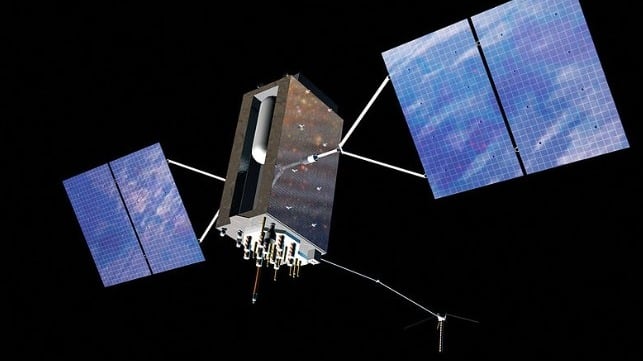Study: More Than Satnav is Needed for Safe Navigation

Thousands of ships near Russia report they are moored at airports. A pilot boat in southern Chile reports it is circling downtown Madrid. Signals from a cargo ship off Somalia indicate it is circling an area near Point Reyes in northern California.
These are just some of the reasons a recently completed European Space Agency (ESA) funded project concluded that systems like eLoran and the VHF Data Exchange System (VDES) Ranging Mode (R-Mode) are needed. These systems will work with satellite systems like GPS and the European Galileo system to ensure safe navigation.
The foundation scenario of the “Maritime Resilience and Integrity of Navigation” project, or MarRINav, though, was a five day, wide area outage of satellite navigation services. The potential for this happening as a result of a major solar flare or other disruption has been listed in the United Kingdom’s National Risk Register since 2012, and is a concern for many other nations as well.
“Maritime navigation and port operations are critical for almost every nation,” said Jonathan Turner, one of the MarRINav project team. “As an island nation with a strong maritime heritage, we in the United Kingdom perhaps have an even greater appreciation of this.” Turner is co-founder of the blue economy solutions company NLA International, which led a team of eight organizations cooperating on the project.
While MarRINav focused its analysis on the United Kingdom, the intent was to provide information, and an analysis framework, that could also be used by other nations. According to the project report, maritime is one of the sectors most dependent upon Global Navigation Satellite Systems (GNSS), and one of the ones with the greatest awareness of GNSS vulnerabilities and their consequences.
Maritime is also one of the sectors most ready to integrate space and terrestrial navigation systems, according to the report’s authors. The International Maritime Organization has already introduced a performance standard for a ‘Multi-System Receiver,’ or MSR, that will incorporate a wide variety of navigation signals. Among the project’s findings are that:
• The United Kingdom needs a comprehensive maritime positioning, navigation, and timing (PNT) architecture with multiple, diverse sources to ensure continuity of maritime operations
• Such a “hybrid solution” could benefit other sectors, especially if non-maritime needs were considered early in the design
• New PNT systems should be terrestrial and sovereign
• Establishing such a system for the UK has a very positive benefit to cost ratio
• Important aspects of the new architecture are E-GNSS (Galileo and EGNOS), Enhanced Loran (eLoran) and the Ranging Mode (R-Mode) of the VHF Data Exchange System (VDES).
• LOCATA or a similar local positioning system should be implemented at UK ports to provide a backup for container operations.
• Satelles Satellite Time and Location may have potential as a static timing solution or in the open ocean, but its utility has yet to be demonstrated.
Completed in just under a year, the comprehensive MarRINav report, along with work package deliverables, comes in at over 1,100 pages. Non-technologists need not wade through it all, though, as an abstract, executive summary, and summary report are also available.
All the MarRINav project reports are available at https://marrinav.com/marrinav-reports/. Also, the Royal Institute of Navigation and Resilient Navigation and Timing Foundation are sponsoring a webinar series to discuss the effort, with the first event scheduled for June 25.
The opinions expressed herein are the author's and not necessarily those of The Maritime Executive.
